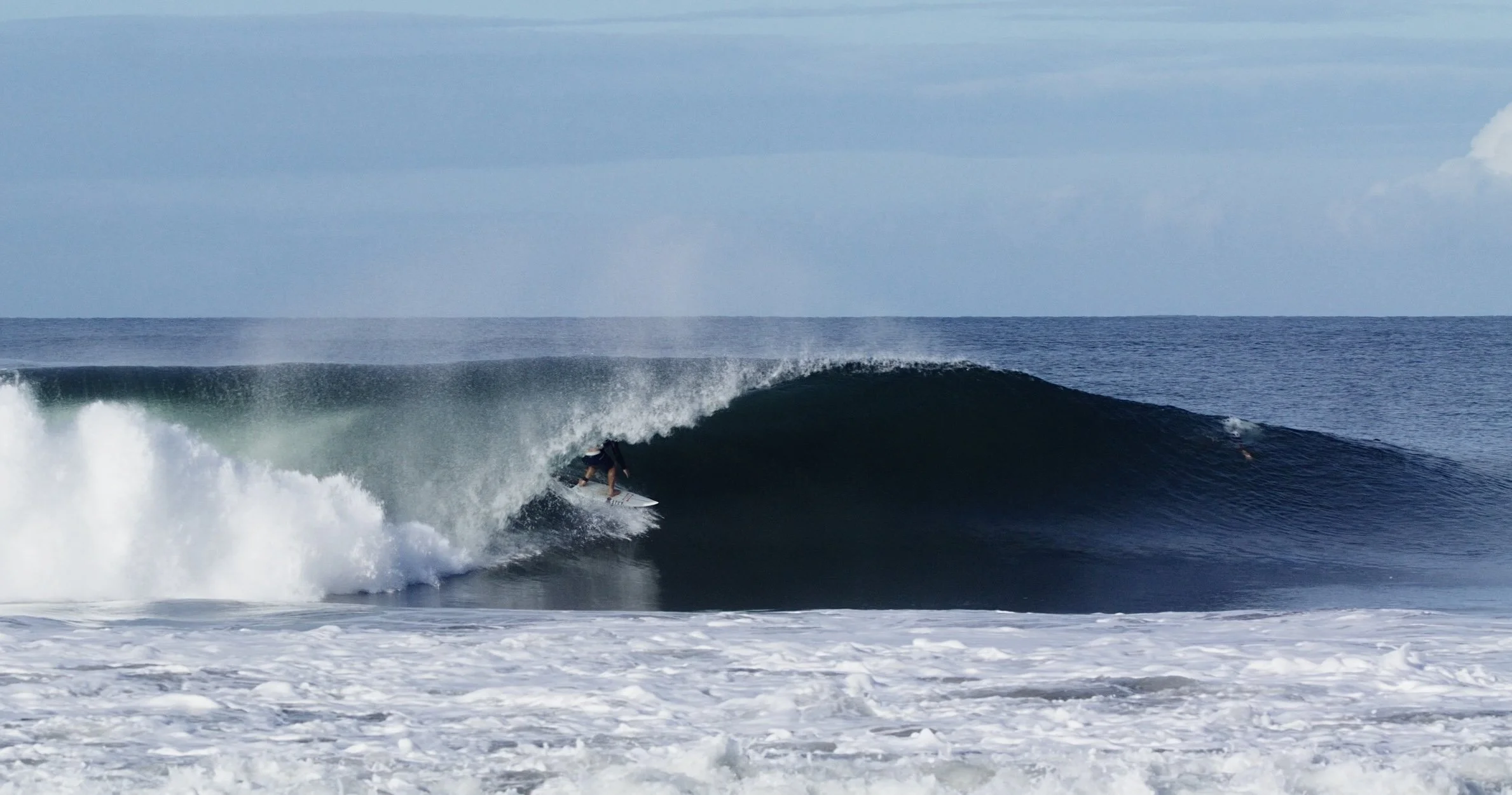When to Surf Northern Nicaragua: A Month-by-Month Guide
Whether you're booking months out or chasing a last-minute swell, Northern Nicaragua delivers surf year-round. From clean, cruisy days in the dry season to heaving barrels during the peak of the south swell window, timing your trip right makes all the difference. The Boom and surrounding breaks can come to life just about any time of year—but if you know what to look for, you'll stack the odds in your favor.
Below is a breakdown of what to expect, month by month, so you can show up ready to surf the kind of waves you came for.
Dry Season (November–April): Clean Surf, Long Sessions, and Fun Peaks
If you're looking for long sessions, manageable swell, and glassy conditions, the dry season is your window. From November through April, Northern Nicaragua sees consistent offshore winds, thanks to a regional high-pressure system over the Caribbean that drives the Papagayo trade winds across Central America. While the southern coast benefits most directly from the Lake Nicaragua venturi effect, Northern Nicaragua can still experience all-day offshores during the dry season, just slightly lighter and more variable. Add in cooler inland air and clear skies, and the result is a prolonged land-sea breeze pattern that keeps mornings—and often afternoons—clean and surfable.
During this season, swells are typically smaller and more forgiving, which makes it ideal for progression, longboarding, and fun, cruisy sessions. Playa Nahualapa becomes a go-to during this stretch, serving up soft, peeling rights that feel more like a point break on the right tide. It's perfect for intermediates, longboarders, and anyone looking to get comfortable in the water. The Boom still breaks during the dry season, especially on a solid north swell, but it's usually more approachable than in the rainy months. Whether you're paddling out to get your first barrel or logging hours on a log, this is the time of year to score clean conditions and variety without the crowds.
Rainy Season (May–September): South Swells and Serious Power
From May through September, Nicaragua's surf scene shifts gears. South and southwest swells start arriving consistently, and The Boom begins doing what it's known for—throwing heavy, slabby barrels just a few feet from shore. If you're an advanced surfer chasing tubes, this is the time to show up. It's not uncommon to get week-long windows of overhead surf with solid period and near-perfect shape on the right tide.
At the same time, the surrounding breaks evolve. Aposentillo, a short walk from Amaru, becomes a versatile zone. While the inside section remains beginner-friendly—ideal for practicing pop-ups and trimming down the line—more experienced surfers will find punchier peaks farther down the beach. It's one of those rare setups that accommodates every level, especially during the rainy season when conditions can swing quickly between playful and powerful.
Yes, it's technically the wet season, but rain usually rolls in late in the day. Mornings stay clean, and the surf stays consistent. If you're here for waves, this is your season.
October: The Wild Card That Sometimes Pays Off
October is the transition month—less predictable but still loaded with potential. Some years bring consistent late-season south swells and perfect, uncrowded lineups. Other years, weather systems churn up onshore winds and stormy conditions. It's not for planners, but if you're watching the charts and willing to move, October might be the best trip you take all year.
The Boom can still fire during this stretch, but nearby points and reef setups often become the go-to. Flexibility is key—and so is knowing when to pull the trigger.
When Should You Come?
Want clean, playful surf and minimal crowds? Come between November and April
Want size, power, and consistent swell? Come between May and September
Want to gamble for something potentially epic and uncrowded? October's your shot
Ready to time it right? Check our retreat calendar and browse our surf packages to find the perfect stay. We'll keep an eye on the charts—you show up ready to paddle out.


